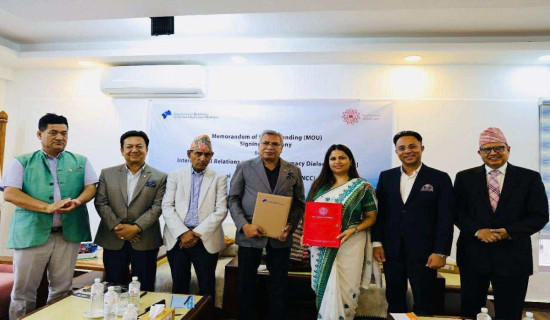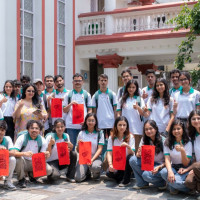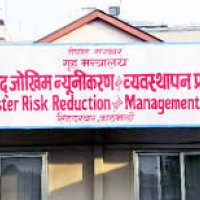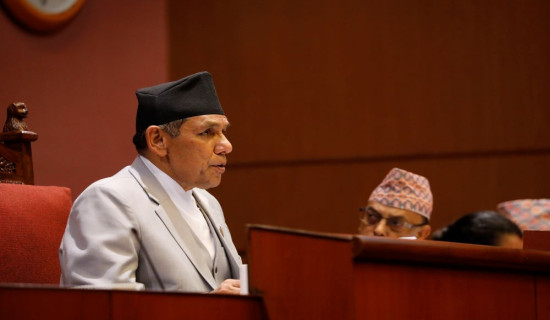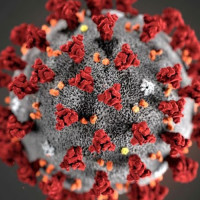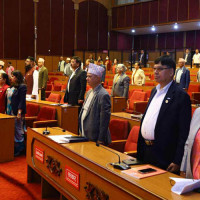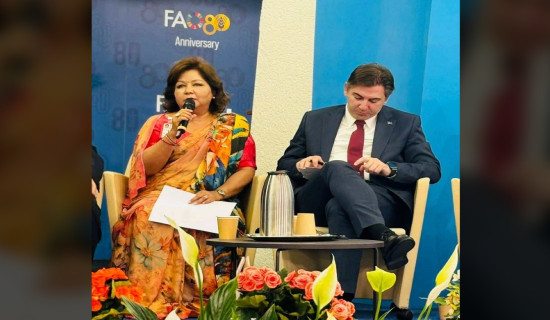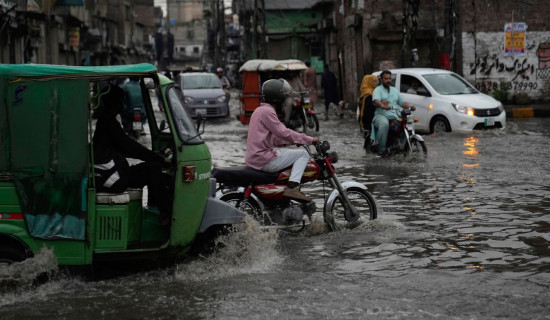- Wednesday, 2 July 2025
Reconstruction of monasteries in Sindhupalchowk nears completion
BY CHITRA MIJAR,Sindhupalchowk, May 24: Hundreds of monasteries in Sindhupalchowk, which were destroyed by the devastating April 25, 2015, earthquake and its aftershocks, are undergoing reconstruction. Among them, dozens have already been rebuilt. With financial assistance from countries including India, the reconstruction of several historic monasteries is now in its final stage.
In Helambu Rural Municipality, several 500-year-old historic monasteries that were completely destroyed by the quake are also nearing completion. According to Nimagyaljen Sherpa, Chairman of Helambu Rural Municipality, reconstruction began five years ago after the Government of India provided financial aid and Nepal’s National Reconstruction Authority issued building contracts through its central construction unit.
India has contributed over Rs. 100 million for the reconstruction of each monastery. However, the government of Nepal issued tenders with reduced amounts during the contract process. For example, Rs. 64.5 million was allocated for the reconstruction of Chiri Monastery, Rs. 55 million for Sermathang Monastery and Rs. 70 million for Tarkeghyang Monastery. These monasteries are now in their final reconstruction phase.
According to Sitar Lama, Chairman of the Chiri Monastery Management Committee, work at Chiri Monastery, including the installation of the steeple, replacement of statues, painting and various artistic decorations, has already been completed. Around 158 households regularly perform religious rituals at the monastery.
Meanwhile, the 400-year-old Jyangter Listi Pawo Monastery, located in Listikot, Ward No. 1 of Bhotekoshi Rural Municipality, is being rebuilt with a budget of Rs. 98.3 million provided by the Indian government. Situated near Nepal’s border with China’s Tibet Autonomous Region, the area also includes Ani Monastery, where around 120 Tibetan refugees live.
Across Sindhupalchowk, post-earthquake monastery reconstruction has gained momentum in areas like Helambu, Panchpokhari Thangpal and Indrawati rural municipalities. The Urban Development and Building Construction Project’s central unit is currently working on rebuilding seven monasteries across the district.
Despite progress, many cultural heritage sites in Helambu, known as the valley of monasteries, remain in ruins. According to Hyolmo cultural researcher Tashi Dongba Hyolmo, while some century-old monasteries have entered the final stage of reconstruction, many others remain neglected and dilapidated. For over six and a half years after the earthquake, nearly 75 per cent of the damaged monasteries survived only under makeshift tarpaulins and temporary supports.
According to data from the Buddhist Philosophy Promotion and Monastery Development Committee, 205 out of 252 monasteries in the district were damaged in the 2015 earthquake. Reconstruction is underway for seven of them with Indian assistance, while some local communities have raised funds through donations and loans to rebuild the monasteries. The remaining monasteries, due to a lack of resources, have been left in ruins.
Previously, Ayangri Monastery, located at an altitude of 3,770 metres on the border of Helambu and Panchpokhari Thangpal rural municipalities, was rebuilt through the initiative of local resident Pema Lama Hyolmo, with the support of the Tarkegyang community and other members of the Hyolmo community.

.jpg)

